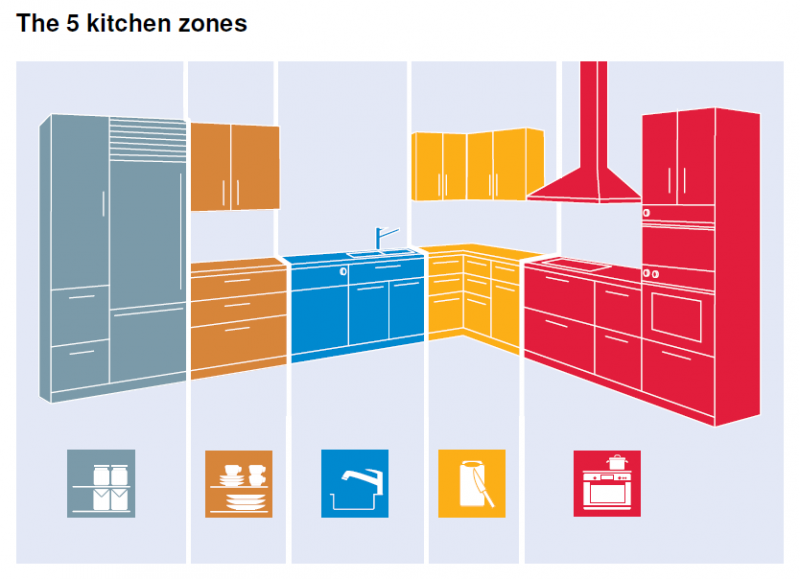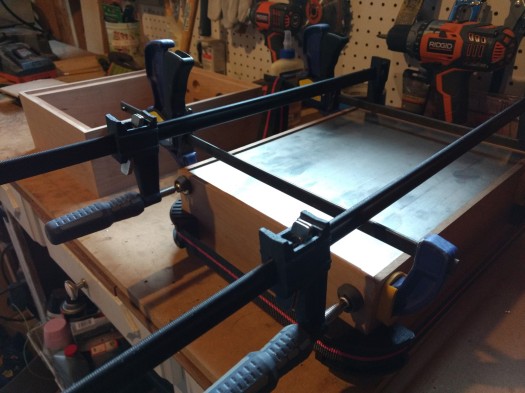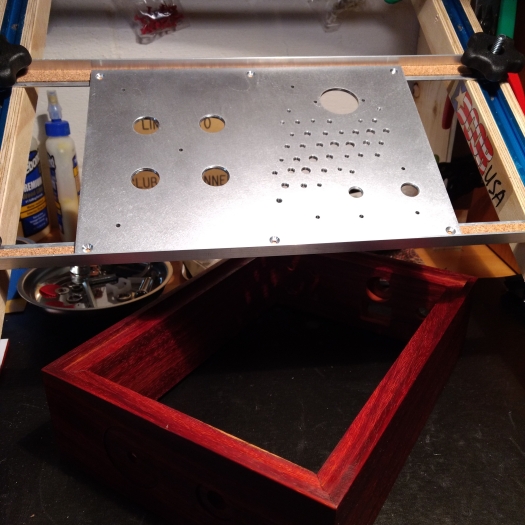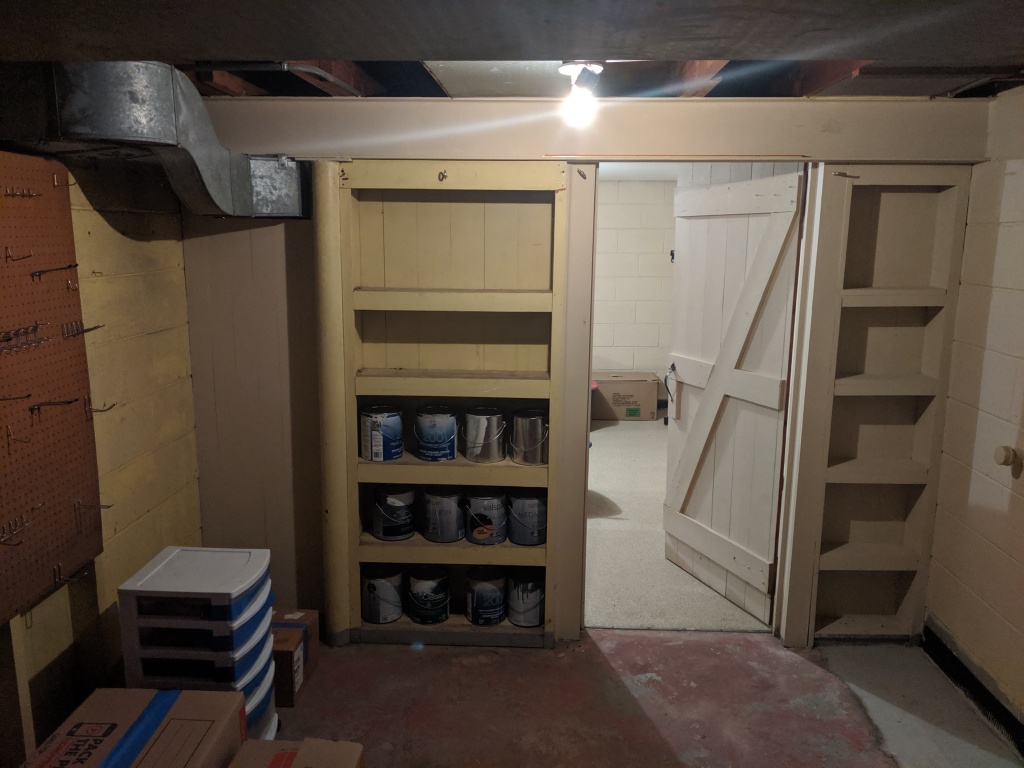Although all my parts and most of my tools are still in boxes, my household move is complete! It will still be a while before I’m spending free time in the workshop, but it’s never too early to daydream a bit about how I’ll set things up.
I have a blank slate of dry, mostly bare, concrete and studs/joists to work with. Aside from a sump in the corner, I’ll be able to utilize all 15ft x 10ft for my own storage and working space. Coming from space that was split between a garage and a shared basement, the 150 sqft is palatial. That said, my goal is to use it as efficiently as possible.
Amp Work Zones

Taking a cue from kitchen design, I’m planning the room layout by functional zones. Specifically, building tube amps involves three key processes: chassis work, electronics work, and parts/materials storage. Each process is a Russian nesting doll of other steps and tasks, of course, but these three general areas represent unique workflow challenges that are more or less shared by the sub-tasks that make them up.
Chassis Work
- Messy in terms of generating dust, shavings, waste
- Work is usually done standing
- Physically large, sharp, and/or spinning equipment
- Space has high potential to be used in non-hobby activities
The woodworking-focused area would benefit from mobility. Rooms adjacent to the workshop can be used as ad-hoc work space for projects that don’t fit in the smaller shop. Keeping tools and workbenches on casters will also let me rearrange as the work or materials require. Additionally, being able to moves benches helps with dust cleanup.

This will probably involve a 8ft+ bench for assembly with an integrated miter saw bay. Space under the bench will house a shop vac (dust control) and extra power tools and tool boxes. My drill press will live on a separate cart, as will my router table, for maximal flexibility.
I need to figure out a good way to deal with casters and the unevenness of basement floors.
Electronics Work
- Benefits from flexibility in lighting and seated/standing work
- Equipment is stationary and shelf size, but numerous
- Results in many small parts used simultaneously
I’m planning to reuse the t-track chassis cradle I had in my last workbench. This was one of the best ‘tricks’ I picked up for building and working on projects. The rest of the space above the workbench will also be very valuable to keep power supplies, variacs, and equipment close at hand while working on a project. The worktop itself should have some kind of padding.

This will likely also be about an 8ft long bench. I do not see a lot of benefit in making this a mobile bench due to its specialized nature and the manageable size of projects. Owning a CNC is one of my long-term hobby goals, so the extra long bench may come in handy (though it kind of breaks the ‘zone’ philosophy).
I’d like to come up with some kind of solution for keeping component parts organized while they’re out and being used for a build. This could be as simple as having tackle-box organizers on hand.
Parts and Materials Storage
- Materials typically include long lumber and extrusions and plate under 18″ square
- Component parts are numerous, but physically small and commodities
- Tubes and transformers vary widely and some are fragile/valuable
The space has shelving built between studs that will help with storage for some things (mostly paint cans at the moment). Storing long materials high on the wall in a rack makes sense. Aluminum plate could be stored on edge without worrying about it deforming. The numerous component parts, tubes, and transformers, present an interesting challenge though.
In the past I’ve kept tubes in Rubbermaid drawers, but I’ve found that I’ll often forget about what I actually have on hand. Curing that will probably require some way of organizing tubes in a single layer, preferably vertically to conserve floor space. I have had my eye on french cleat style storage walls and am thinking about ways to adapt this to small parts and tubes. The modular nature of it has some potential benefits.
First things first

Before I start cutting too much wood for benches and storage, I plan to give the whole room a good scrubbing and a fresh coat of paint. Other rooms in the new basement have a coat of epoxy that I find to be very appealing, so I will likely treat the floor to make it easier to clean and generally more attractive. I’ll also switch out the bare bulb light fixtures to shop lights and have some additional outlets put in on their own circuit.
Yes, there’s lots to do in the new workshop! I plan on building a simple tube project or two in the meantime. Refreshing my memory of what it’s like to start out without a bunch of tools is probably a great exercise in and of itself!

